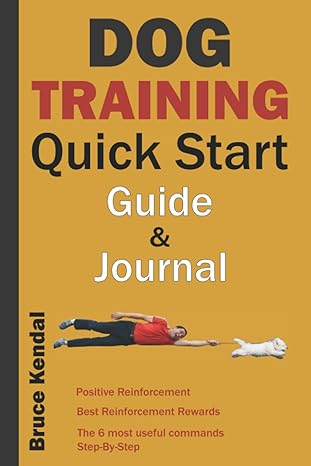Crate training is a great way to help your puppy learn how to behave indoors and develop good habits from the start. It also provides a safe, cozy space for them to call their own.
The basics of crate training are simple: get your puppy used to spending time in their crate, gradually increasing the amount of time they spend in there until they’re happy to stay in for short periods while you’re out of the house.
Of course, every puppy is different and some may take to crate training more quickly than others. But with a little patience and consistency, even the most reluctant of pups will learn to love their crate in no time.

Here’s everything you need to know about crate training your puppy, from how to choose the right crate to how to get them to enjoy spending time in the crate.
What Is Crate Training?
Crate training is a process of teaching your puppy or dog to accept spending time in a crate.
The crate becomes their “den” – a safe, cozy place they can go to relax or sleep. It’s an effective way of house-training puppies and dogs, and can also be used to help with Separation Anxiety.
Crate training should be a positive experience for your puppy or dog. It should never be used as a punishment – if you do, your dog will start to associate the crate with negative experiences and may become reluctant to go in there.
Why Crate Train A Puppy
Crate training has a number of benefits for both you and your puppy.
It’s a great way to toilet train your puppy, as they will naturally avoid soiling their sleeping area.
It can also help with Separation Anxiety, as it provides a safe space for them to stay while you’re out of the house.
Crate training can also be useful if you ever need to travel with your dog, as it will make them feel more comfortable in unfamiliar surroundings.

When To Start Crate Training A Puppy
The best time to start crate training a puppy is around 8 weeks of age. Puppies at this age are already starting to become more independent, and they can start learning how to stay in a small space for short periods of time. If you wait too long to start crate training, your puppy may have some difficulty adjusting.
When Crate Training Where Should The Crate Be?
The crate should be placed in an area of the house where the family spends a lot of time, such as the living room or kitchen. This will help the puppy feel like he is part of the family and not isolated.
How Long Should A Puppy Stay In The Crate?
A puppy can remain in his crate for up to 4 hours at a time. If the puppy is younger than 6 months, he should not be crated for more than 2 hours at a time. If the puppy is older than 6 months, he can handle being in the crate for up to 8 hours.
What Are The Benefits Of Crate Training?
There are many benefits of crate training, including the following:
- It helps with potty training because puppies will not want to soil their sleeping area.
- It keeps your puppy safe and out of trouble when you can’t supervise him.
- It can help calm a puppy who is feeling anxious or stressed.
- It can help your puppy learn to settle down and be calm.
- It can make traveling with your puppy easier and less stressful.
How To Crate Train A Puppy
Here are some tips on how to crate train a puppy:
- Start by introducing your puppy to the crate. Place the crate in the family room or another area where the family spends a lot of time. Leave the door open and put a treat inside. Let your puppy explore the crate at his own pace.
- Once your puppy is comfortable going in and out of the crate, you can start feeding him his meals inside the crate.
- When your puppy is comfortable with eating his meals inside the crate, you can start closing the door while he is eating. Start by closing the door for a few seconds and then gradually increase the amount of time you leave him in the crate.
- When your puppy is comfortable being in the crate for short periods of time, you can start leaving him in the crate for longer periods, such as when you go to work or run errands.
- If you need to leave your puppy in the crate for more than 4 hours, make sure to provide him with a potty break and some exercise before crating him.
- Never use the crate as a punishment. Your puppy should always associate the crate with positive things, such as treats and meals.
Following these tips you can crate train your puppy in no time!
How To Crate Train A Puppy At Night
Here are some tips on how to crate train a puppy at night:
- Start by putting the crate in your bedroom or another room where you spend a lot of time. This will help your puppy feel like he is part of the family and not isolated.
- Before bed, take your puppy outside for a potty break.
- When it’s time for bed, put your puppy in the crate with a treat.
- If your puppy cries or whines during the night, ignore him. He will eventually learn that crying will not get him out of the crate.
- In the morning, take your puppy out of the crate and take him outside for a potty break.
By following these tips, you can crate train your puppy at night!
What Do Do If Your Puppy Cries In The Crate
Make sure all of his/her needs have been met (food, water, potty). Then if your puppy cries in the crate, it is important to ignore him. If you let him out every time he cries, he will learn that crying gets him out of the crate. This can be difficult to do, but it is important to be consistent. If you cave and let him out every time he cries, he will never learn to settle down in the crate.
Here are some tips on what to do if your puppy cries in the crate:
- Ignore the crying. This can be difficult to do, but it is important to be consistent. If you cave and let him out every time he cries, he will never learn to settle down in the crate.
- Give him a treat when he is quiet. This will help him associate the crate with positive things.
- Make sure he has a potty break before crating him. A full bladder can make puppies cry.
- Put a blanket over the crate. This will help muffle the sound and make him feel more comfortable.
By following these tips, you can help your puppy learn to settle down in the crate!
How To Choose The Best Crate
There are a few things to consider when choosing a crate for your puppy:
- Size: Make sure the crate is big enough for your puppy to stand up, turn around, and lie down.
- Material: Choose a crate made from sturdy material such as metal or plastic.
- Location: Put the crate in a quiet location in the house.
By following these tips, you can choose the best crate for your puppy!
Best Crates For Training Puppies
Here are our top recommendations of crates for training puppies…


